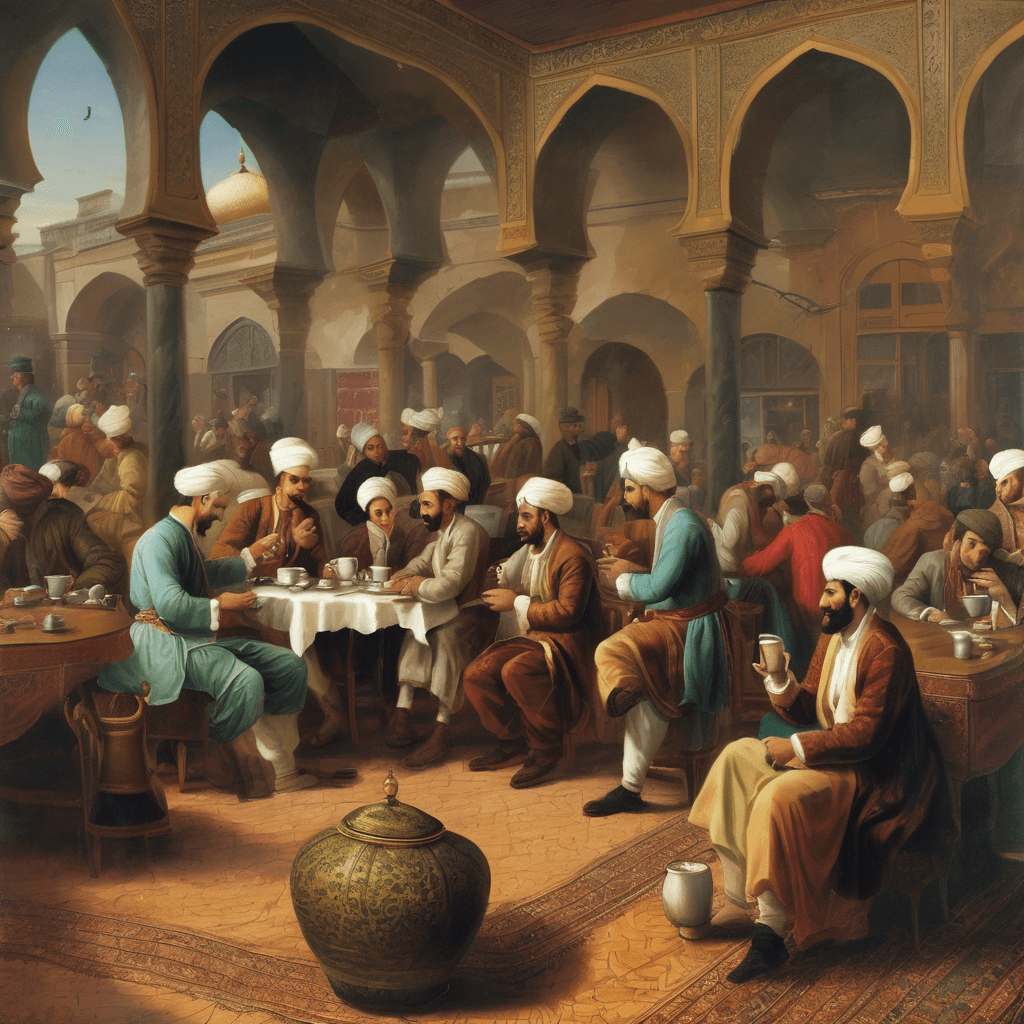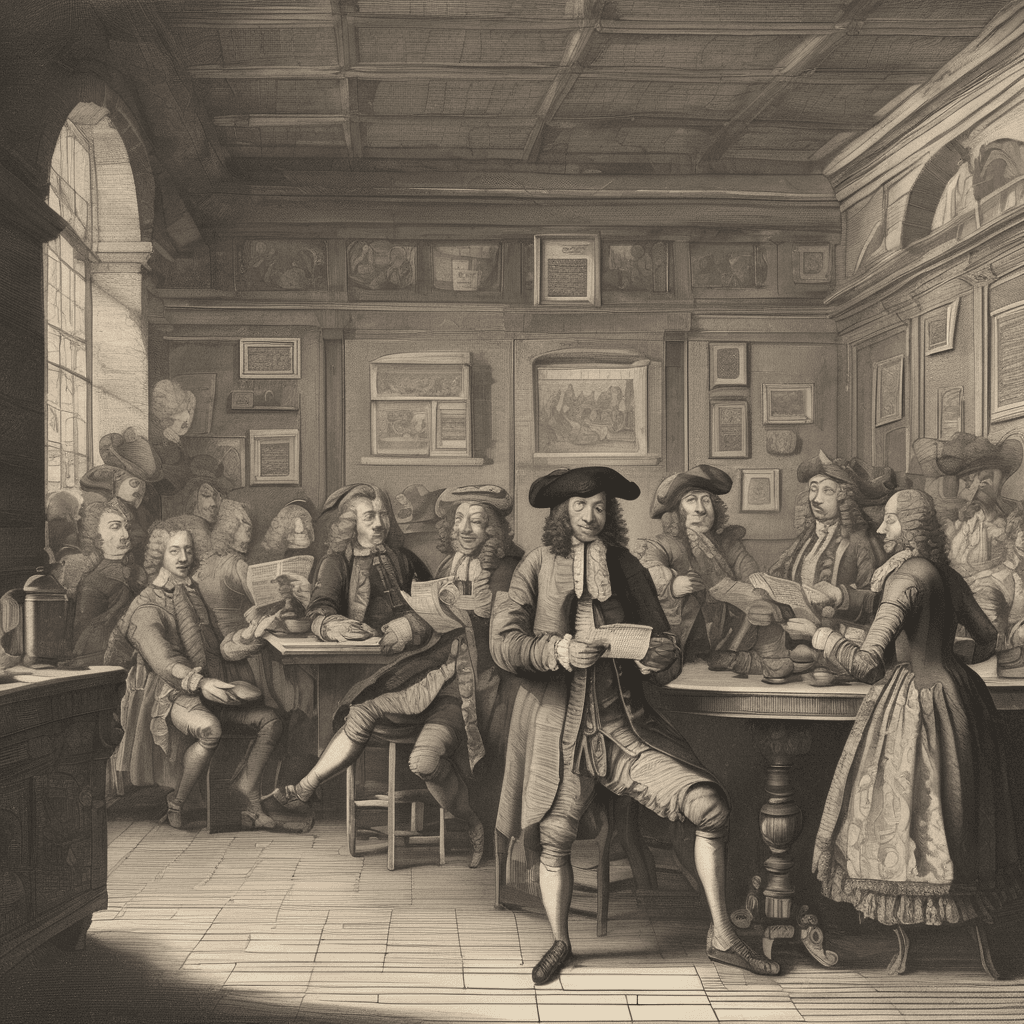Step into a 17th-century Ottoman coffeehouse, and you’ll be enveloped in a sensory symphony. The air is thick with the aroma of freshly roasted coffee, mingling with the murmur of lively conversation, the clinking of cups, and the rhythmic strumming of an oud. Scholars passionately debate philosophy, poets recite verses with dramatic flair, and merchants strike deals amidst the fragrant haze, all fueled by the stimulating effects of this exotic new beverage. Coffeehouses weren’t just places to consume coffee; they were vibrant hubs of intellectual and cultural exchange, shaping politics, art, and society in profound ways.
The Ottoman Coffeehouse: The Birthplace of Coffee Culture
In the heart of the Ottoman Empire, coffeehouses, known as “kahvehane,” emerged as unique social spaces. Unlike the exclusive coffee circles of the elite, these establishments welcomed people from all walks of life—scholars, merchants, artists, and everyday citizens—to gather, enjoy coffee, and engage in lively discourse. They were centers of community life, where ideas flowed as freely as the coffee itself.
Scholars and intellectuals flocked to coffeehouses to debate philosophy, politics, and current events. Merchants used them as meeting places to strike deals and exchange news. Even sultans, sometimes in disguise, would visit coffeehouses to gauge public opinion and engage with their subjects.
This freedom of expression and exchange of ideas sometimes made those in power uneasy. Coffeehouses were occasionally viewed as potential hotbeds of dissent and faced periodic crackdowns. Some religious leaders even declared coffee “haram” (forbidden), fearing its stimulating effects would lead to immoral behavior. However, the allure of coffee and conversation proved too strong to suppress, and coffeehouses continued to thrive throughout the empire.
Coffeehouses Conquer Europe
As coffee beans made their way to Europe in the 17th century, so did the concept of the coffeehouse. Initially, European coffeehouses catered to the elite, mirroring the exclusivity of their Ottoman counterparts. But coffee’s stimulating appeal transcended social barriers, and these establishments gradually evolved to reflect the changing social landscape of different countries.
In England, coffeehouses became known as “penny universities,” offering a space where, for the price of a cup of coffee, anyone could enter a realm once reserved for the privileged. They became meeting grounds for scientists, writers, politicians, and everyday citizens alike, fostering a vibrant exchange of ideas and fueling the intellectual ferment of the Enlightenment era. Notable figures like Isaac Newton and John Locke were known to frequent coffeehouses, engaging in lively discussions that shaped their groundbreaking ideas.
Coffeehouses: Engines of Social Change
The impact of coffeehouses extended far beyond the drink itself. They served as catalysts for social and political change in numerous ways:
- Fostered Community and Conversation: Coffeehouses created spaces for discussion and the free exchange of ideas, blurring social lines and fostering a sense of community.
- Shaped Public Opinion: They became arenas where public sentiment was forged, independent of the court or the church, contributing to a growing sense of civic engagement.
- Economic Powerhouses: News circulated rapidly in coffeehouses, business deals were struck, and institutions like Lloyd’s of London, a major insurance market, have their origins in these bustling hubs.
- Hotbeds of Revolution: The free-flowing exchange of ideas, fueled by coffee’s stimulation, made coffeehouses natural breeding grounds for revolutionary thought. Some historians argue that the French Revolution was plotted in the cafes of Paris.
The Legacy Lives On
While coffeehouses have evolved over time, their core function as social hubs remains. Whether bustling cafes packed with students or cozy neighborhood coffee shops, they continue to be places where people gather, create, and connect. Though modern brewing methods might be faster and Wi-Fi has replaced parchment and quill, the spirit of the coffeehouse endures – a testament to coffee’s ability to bring people together and stimulate both minds and conversation.
The Dark Side of Expansion
Coffeehouses may have sparked enlightenment, but “Seed 101: III. The Dark Side of Coffee’s Expansion” reveals the hidden cost of its global journey: a complex legacy of colonialism and exploitation.






No Comment! Be the first one.